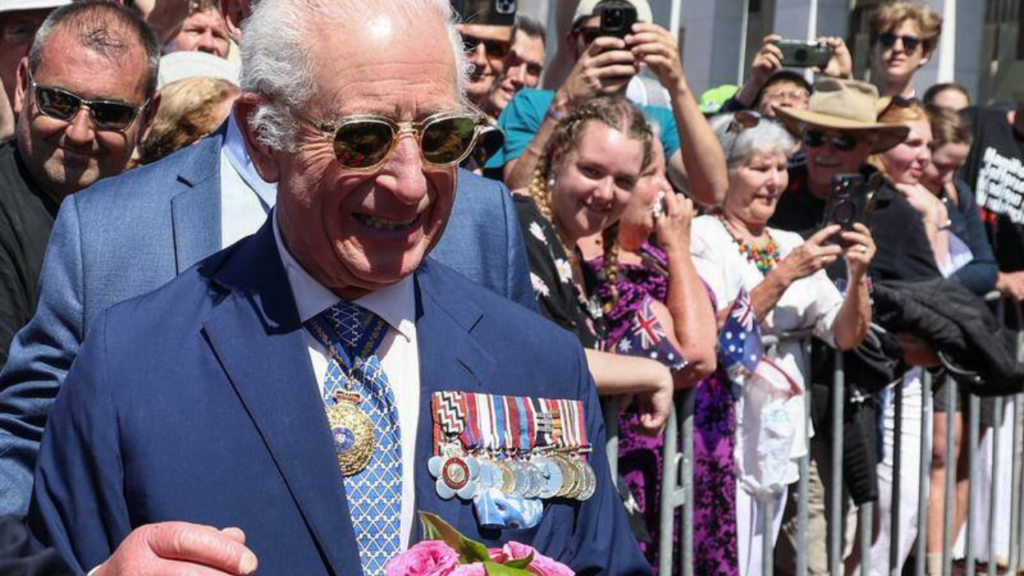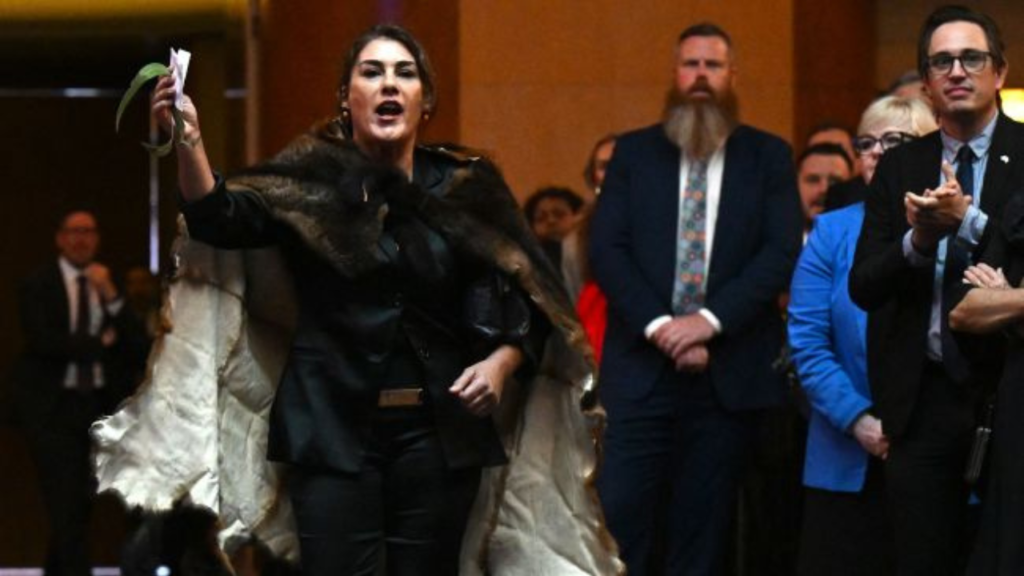
Australian Senator Lidia Thorpe disrupted King Charles III’s address at Parliament House in Canberra, vocally protesting his presence by shouting, “This is not your land, you are not my King,” before being escorted away by security.
Her remarks, which included claims of genocide against Aboriginal Australians, were met with disapproval from Aboriginal elder Aunty Violet Sheridan, who emphasized that Thorpe’s actions did not represent her views.
The ceremony wrapped up without acknowledging the protest, allowing King Charles III and Queen Camilla to greet the hundreds of well-wishers outside. Despite being a Commonwealth country with the King as head of state, Australia has seen rising debates about removing the monarchy from this role. Independent Senator Lidia Thorpe, who has long pushed for a treaty between the Australian government and its Indigenous peoples, made headlines with her protest, asserting that Aboriginal and Torres Strait Islander communities never ceded their sovereignty.
In an interview , Thorpe explained her motivations, stating she aimed to convey a “clear message” to the King: “To be sovereign you have to be of the land. He is not of this land.” She urged the King to direct Parliament to engage in discussions about a peace treaty with Australia’s first peoples.
| Read More : Champion Cyclist Sir Chris Hoy Reveals Terminal Cancer Diagnosis |
| K – Drama Preview : What Comes After Love EP 6 Preview |

“We can lead that, we can do that, we can be a better country—but we cannot bow to the coloniser,” Senator Lidia Thorpe declared, highlighting the historical injustices faced by Indigenous Australians. Wearing a traditional possum skin cloak, she criticized the late Queen Elizabeth II as a symbol of colonization, recalling that she was made to repeat her oath upon being sworn in as a senator in 2022.
The conversation around addressing the significant disparities between First Nations people and the broader Australian population is ongoing, with issues such as poorer health, wealth, and education outcomes at the forefront. Thorpe’s comments underscore the urgency of these discussions, advocating for a more equitable future for Indigenous communities.
Despite the protest, many people were excited to see the royals, lining up outside Parliament House under the hot Canberra sun while waving Australian flags. Jamie Karpas, 20, expressed her enthusiasm, saying she didn’t know the royal couple was visiting but felt the Royal Family is an important part of Australian culture. CJ Adams, a US-Australian student, noted that King Charles is the head of state of the British Empire and that people should make the most of the experience. A small group of dissenters also gathered on the lawn in front of Parliament House.
The royal visit to Canberra was always meant to address Australia’s history with its Indigenous peoples, but Lidia Thorpe’s protest made it more direct. Upon arriving, King Charles and Queen Camilla were welcomed by politicians, schoolchildren, and Ngunnawal Elder Aunty Serena Williams, and they received a traditional welcome featuring a didgeridoo. The King spoke about the wisdom of Indigenous communities and the journey toward reconciliation. However, Thorpe’s shouts interrupted as he sat down. Buckingham Palace has not officially commented on the protest, choosing instead to highlight the large crowds that came to support the royals. A palace source noted that the couple was deeply touched by the turnout.
King Charles Visits Australia Amid Republican Debate and Health Challenges

For decades, Australia has debated becoming a republic and breaking from the monarchy, but a 1999 referendum on the issue was defeated. Support for republicanism has grown, and Prime Minister Anthony Albanese, who is a long-time advocate, recently shook hands with the King before Lidia Thorpe’s protest. However, Albanese’s government has ruled out holding another vote soon after a failed referendum on Indigenous recognition last year.
King Charles’s visit is his first since becoming king and comes while he is undergoing cancer treatment, making the tour shorter than usual. A lighter moment occurred when the King petted an alpaca wearing a small crown after visiting Canberra’s war memorial. The royal couple also planted trees at Government House, and the King, an environmentalist, visited the National Bushfire Behaviour Research Laboratory.



